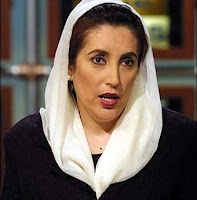



Sigma oli ensimmäinen valmistaja, joka toi markkinoille monen kaipaaman pikkukameran, jossa on iso kenno ja hyvä kuvanlaatu. Tästä pitää heti kättelyssä antaa pisteet.
Sigma DP2 on alkuperäisestä DP1-mallista paranneltu versio ja eroaa vuonna 2006 esitellystä DP1:stä myös objektiivin osalta. DP1 oli varustettu laajakulmalla ja DP2 kuvaa lähes normaalilla polttovälillä, joka vastaa kinokameran 40 millistä kuvakulmaltaan.
Sigma käyttää ainoana valmistaja Foveon kennoa, jonka toiminnasta on hyvä selitys
täällä enkä siksi ala sitä tässä yksityskohtaisesti selittelemään. Foveon toimii erittäin hienosti kohteissa, joissa yksi väri hallitsee kuvaa.
Tavallisen Bayer-kennon kuva huononee normiaiheesta, jos kuvassa on pääasiassa esim. punaista väriä. Kennossa kun vain osa pikseleistä on herkkiä punaiselle, niin kameran prosessori joutuu arvaamaan tavallista isomman osan kuvan yksityiskohdista.
Sigman kenno on hieman APS-C kokoa pienempi, mutta 4/3 kokoa suurempi. Foveonissa pikseleitä ei ole yhtä tiheässä kuin Bayer-kennossa ja siksi kuvan koko jää nykymittapuun mukaan vaatimattomaksi. Sigma DP2:n kuvassa on 2460 x 1760 pikseliä, joka tarkoittaa n. 4,6 megapikseliä.
Sigma puhuu 14,6 megapikselin kamerasta, mutta se kuulostaa hieman hassulta, kun kuva kuitenkin on vain n. 4,6 megapikseliä.
Pikselieiden lukumäärä ei merkitse lopputuloksen kannalta ollenkaan niin paljon kuin mainoksissa annetaan ymmärtää, mutta joissakin tapauksissa pikseleitä kuitenkin tarvitaan paljon. Monet kuvatoimistot haluavat tietyn kokoisen kuvan, jota ei ole suurennettu jälkeenpäin. Rajaaminen voi olla joskus tarpeellista ja silloin on kiva, jos rajaamisen jälkeenkin on vielä jotain jäljellä.
Sigman käyttöliittymä on hieman sekava eikä noudata aivan samoja kaavoja kuin valtavirran kamerat. Kokeilukamerassa ei tullut käyttöohjetta mukana, joten käyttöliittymän selkeys tuli korostetusti esiin. Omistaja-asteella tämä ei tietenkään haittaa, mutta satunnaista käyttäjää hieman.
Kameran takaseinässä olevat painonapit ovat rungon sävyyn mustia ja pienet symbolit napeissa ovat myös mustia, josta seuraa, että symboleita ei nappien päistä erota. Tämänkin oppii omistajana, mutta silti seikka ihmetyttää.
Sigmaa on moitittu monessakin testissä hitaaksi, joka ei ole aivan turhaa kritiikkiä. Sigma ei kuitenkaan ole aivan toivoton, mutta kieltämättä monessa tilanteessa toivoisi kameralta hieman nopeampaa reagointia.
Toisaalta taas, kun muistelee menneitä, niin kaikki nykyajan digikamerat ovat käytännössä vähintään yhtä nopeita kuin vastaavanlaiset filmiajan sukulaisensa. Kuvasin pitkästä aikaa Olympus XA:lla, joka on aivan mainio ja erittäin pieni filmikamera, mutta käsiviritteisenä XA:n sarjakuvausnopeus ei ole kovin kummoinen.
Kaikki on suhteellista, mutta tämän päivän standardeilla mitattuna Sigma DP2 on hieman hitaanpuoleinen. Myös käynnistyminen tapahtuu laiskasti ja kestää hieman liian kauan.
Tarkennus on luotettava, mutta hidas ja luovuttaa yllättävän helposti hämärässä, jos tarkentaminen ei heti onnistu. Onneksi etäisyyden voi asettaa näppärästi myös käsin, sillä näytölle tulee asteikko, jolla peukalopyörylällä asetettava etäisyys näkyy. Hyvä toiminto, jonka toivoisi myös muihin vastaaviin kameroihin.
Sigman 24,2 mm f/2.8 objektiivi on kerrassaan loistava. Tämän kuvakulmaltaan kinarin 40 millistä vastaavan kakkulan piirto ja kontrastintoisto ovat mitä parhaimmat eikä kromaattisia aberraatioita juuri näy. Himmentäminen vaikuttaa käytännössä vain syväterävyyteen, sillä toisto on hyvä jo täydellä aukolla. Pienillä aukoilla diffraktio eli valon taipuminen tuo pehmeyttä mukaan, mutta tämä ei ole objektiivin vika, vaan fysikaalinen ilmiö.
Kuvanlaatu on Sigmassa erittäin hyvä. Kuva on terävä ja sävyt ovat miellyttävän pehmeät. Kamera tosin tekee todella platkua jälkeä perusasetuksilla ja kuvat tarvitsevat jälkikäsittelyä näyttääkseen kunnollisilta värien puolesta. Enkä todellakaan ole ylikylläisten värien ystävä. Kuvasin ainoastaan raakakuvia, jotka kehittelin Adobe Lightroomissa.
Sigman kuvat näyttävät aivan hyviltä vedostettuna 30 x 40 cm kokoisisksi, mutta aavistus pehmeyttä näkyy, kun oikein läheltä katsoo. Normaalilta katseluetäisyydeltä kuvat ovat hyvännäköisiä.
Foveon-kennon tekniikka vaikuttaa hyvältä, mutta uusissa Bayer-kennoissa on niin paljon enemmän pikseleitä ja prosessorien arvauskyky hyvä, että Sigman kennon mahdollinen paremmuus kuvanlaadussa hieman katoaa vähiin pikseleihin.
Kuvatiedostot sen sijaan eivät ole aivan pieniä, sillä raakakuvan koko on n. 12 megaa, joka on samaa sarjaa esim. Nikon D700 kanssa. Isolle muistikortille on käyttöä Sigmassa.
Sigma on pokkarin kokoinen ja siinä suhteessa ainutlaatuinen kamera varustettuna isohkolla kennolla ja hyvällä optiikalla. Sigma DP2 ei ole kaikkien makuun, mutta jos pieni pikselimäärä ei hirvitä, niin oikein käytettynä Sigmalla voi tehdä aivan eri näköistä jälkeä kuin peruspokkarilla.
Aivan äskettäin esitelty
Olympus E-P1 on hieman Sigmaa kalliimpi, mutta saattaa monelle olla houkuttelevampi vaihtoehto vaihto-objektiiveilla ja hyvällä käytettävyydellä. Sigma DP2 maksaa vajaat 700 euroa ostopaikasta riippuen.
Yllä vielä muutama Sigmalla kuvaamani otos, jotka kaikki on kuvattu raakana ja vedostettu Lightroomissa. Teknistä tietoa Sigmasta löytyy
täältä ja
täältä.
“This decision puts the law and science first. After review of the scientific findings, and another comprehensive round of public engagement, I have decided this is the appropriate course under the law,” said EPA Administrator Lisa P. Jackson [left]. “This waiver is consistent with the Clean Air Act as it’s been used for the last 40 years and supports the prerogatives of the 13 states and the District of Columbia who have opted to follow California’s lead. More importantly, this decision reinforces the historic agreement on nationwide emissions standards developed by a broad coalition of industry, government and environmental stakeholders earlier this year.”




















































